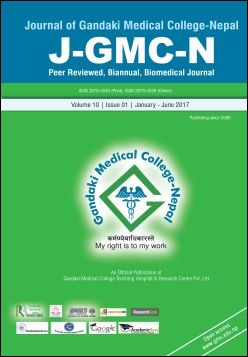Association between Fetal Gender and the Labor Curve at Term Pregnancy
DOI:
https://doi.org/10.3126/jgmcn.v10i1.17902Keywords:
Fetal gender, First stage of labor, Labor CurveAbstract
Introduction: Animal and pathologic models have provided evidence for a fetal influence on the labor process; however, the potential impact of fetal gender on the labor curve has gone largely unstudied.
Objectives: To determine the association between fetal gender and first stage labor curve at term.
Methods: This was a retrospective study. There were 330 patients enrolled in this study, who gave birth from January 2011 to December 2012 by reviewing the charts. A total of 500 charts were reviewed.
Results: There were three hundred thirty (330) patients, out of which a total of 179 (54.2%) patients gave birth to males and 151 (45.8%) gave birth to females. Women who had a male fetus had a longer first stage of labor than women who carried a female fetus. The difference in the birth weight of the infants is statistically significant, male newborns were heavier at birth than female newborns.
Conclusions: Term labor in the first stage was found to be slower in women who carried a male fetus compared with those with female fetus which is not statistically significant.
Journal of Gandaki Medical College
Vol. 10, No. 1, 2017, page: 1-4
Downloads
Downloads
Published
How to Cite
Issue
Section
License
This license allows reusers to distribute, remix, adapt, and build upon the material in any medium or format for noncommercial purposes only, and only so long as attribution is given to the creator.

